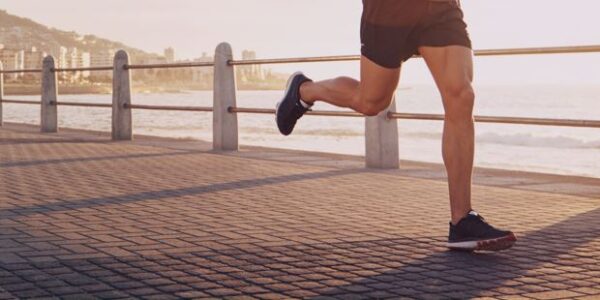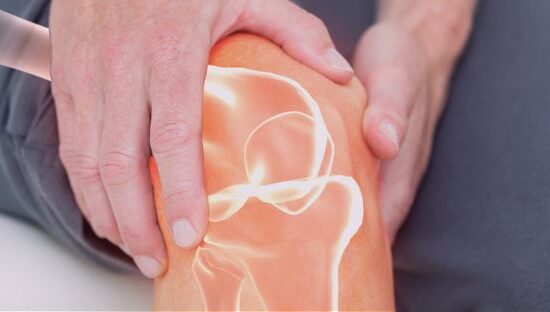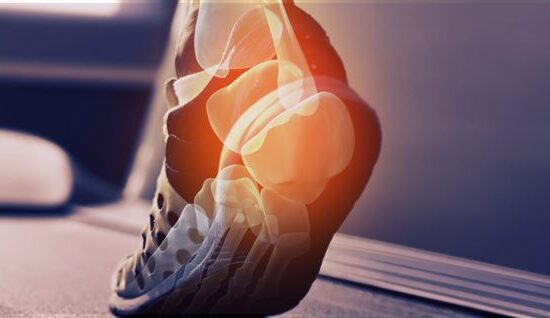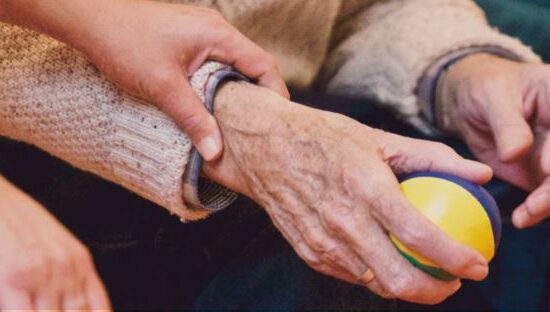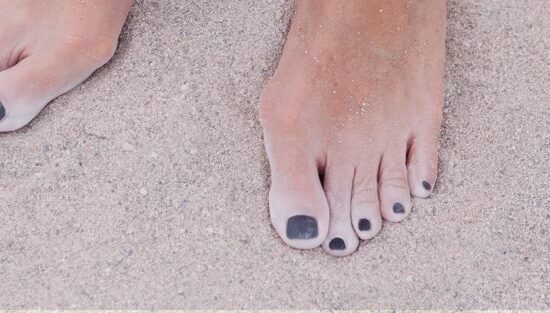Swollen ankle and sharp pain from a wrong move? It’s probably a sprain, often called a strain. What exactly is this injury? Here are some explanations of the physiological causes, treatment solutions and prevention tips to get you back on your feet and keep it from happening again.
What is a sprained ankle?
“I twisted my ankle.” Ever heard that before? An ankle sprain happens when the foot is inverted during a false move, fall, twist or bad landing. The ankle joint is held by fibrous tissue called ligaments. A sprain is caused by a stretch or tear in one or more ligaments. It does not involve the bones.
Be aware that the severity of ankle sprains can vary. There are different degrees:
- Mild sprain: Minor injury with minimal swelling. Pain is tolerable and occurs especially when moving the ankle.
- Moderate sprain: The ankle is swollen and sometimes bruised. The injured person has difficulty walking and feels pain.
- Severe sprain: The ankle can no longer support the weight of the body. It is swollen and covered with bruises. The ligament is completely torn, limiting the movement of the joint.
The severity of the sprain will determine the appropriate response: from a little rest for a mild injury to near-complete immobilization and crutches for serious cases.
Five risk factors
Sprains occur most often due to bad luck or clumsiness. But the five factors presented here influence your level of risk.
1. Predisposition
If your gait is altered by a biomechanical alignment problem, you will be more prone to sprains. Same thing if you lack flexibility or have hyperlaxity (excessive elasticity of certain soft tissue, such as ligaments and tendons).
Sprained your ankle before? There is a 50% chance of spraining it again, so it’s very important to prevent sprains with:
- Joint support products (shown below)
- Proper exercises (for more information, see Preventing ankle pain)
2. Fatigue
Be doubly careful at the end of a workout: the last mile of a hike, the final descent before the ski resort closes. Tired muscles put more strain on the joint, making it vulnerable.
3. Physical fitness
The more active you are, the better protected your body is against sprains. Physical activity helps develop the musculature needed to keep the joint in place. Active people also exercise their reflexes and stability, making them less likely to twist an ankle. Maintaining a healthy weight also helps prevent this type of injury.
4. Choice of activity (or occupation)
If repetitive sprains are a part of your life, opt for gentle activities like walking or swimming. You increase your risk of injury by performing any activity:
- With sudden movements and changes in direction (soccer, basketball, ultimate frisbee)
- On uneven terrain (hiking, skiing, trail running)
- With frequent landings (climbing, gymnastics, freestyle skiing, volleyball, parkour)
In addition, some people have jobs that require them to carry heavy loads or walk on uneven ground with obstacles, such as movers, construction workers, military personnel, delivery staff, etc.
5. Choosing equipment
Always make sure you wear the right footwear for your activity: closed shoes with sturdy reinforcements, hiking boots that hug the ankles, adapted shoes, foot orthotics to restore alignment and more. Smart choices make all the difference.
If you have weak ankles, wearing an ankle brace can also provide the extra support to prevent an injury. Take a look at our products.
How do I treat a sprained ankle?
What to do after a sprain is quite simple. There are two steps.
Step 1: Immediate actions
- Rest. First, stop all painful activities. Do not walk on your foot. Try to raise the ankle to limit inflammation.
- Ice. Apply ice to the injury to decrease inflammation, 10 minutes every 2 hours for the first 3 days. Then continue as needed for swelling.
Step 2: Rehabilitation
There is a tendency to believe that immobilizing a sprained ankle will promote healing. That is false. After the initial measures, it’s best to keep the ankle moving and start gentle exercises in the first few days.
When the pain subsides, it’s time to do some strengthening exercises to prevent the sprain from recurring. See our suggestions under Preventing ankle pain.

